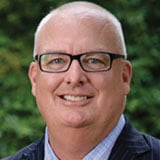Fidelity has just launched its first set of passive exchange-traded funds. We called on Jim Lowell, editor of Fidelity Investor, to explain how to use these new products, and which of these ETFs investors should buy now.
Steve Halpern: Joining us today is Jim Lowell, the advisory industry's leading expert on the Fidelity family of funds. He's also the editor of Fidelity investor. How are you doing today, Jim?
Jim Lowell: Doing just fine.
Steve Halpern: In late October, Fidelity launched its first set of sector ETFs. Could you explain how these sector ETFs are different from the firm's current lineup of sector funds?
Jim Lowell: Fidelity is known for actively managed funds, funds whose fundamental values derive from stock pickers at their helm, and that's absolutely true with regard to 42 select funds, which have been in existence, some for 30 years or more, with stellar track records. But those are actively managed funds.
The ETFs, the ten sector ETFs that they've launched, are distinctly different in that they're based on a passive index and they're really geared to both compete with the ETF landscape, but also complement the lineup with existing Fidelity select funds.
Steve Halpern: You've looked at some scenarios, seen in your recent newsletter, in which an investor could combine the new ETFs with traditional sector funds to better manage factors such as risk and tax efficiency. Can you expand on that?
Jim Lowell: Absolutely. So, I've been writing about both actively managed funds and exchange-traded funds, or ETFs, since 1996, so I have a long-term view on some of the benefits of both. As someone who likes to spend some time on the water, I know you need two oars in the water in order to go straight.
One of the things that Fidelity's new sector ETF enables an investor, or an investment advisor to do, is to complement one of their actively managed sector funds. For example, if you own Select Health Care (US:FSPHX) run by Eddie Yoon.
It's a superlative track record—having yet another phenomenal year with lower risk, relative to the S&P 500, but higher return.
You can compliment that with Fidelity's new MSCI Healthcare ETF (FHLC). Basically, I put two-thirds in the actively managed fund, one-third in the ETF.
Why? Because it lowers the overall expense of the position, it increases your ability to trade it more frequently, if that's what you want to do, and you have better control of the overall tax efficiency of the position.
We have healthcare as an overweight in our portfolio, so about a 15% position. I can easily see moving 5% of that position into the new Fidelity MSCI Healthcare ETF.
Steve Halpern: Among the ten new ETFs that were just launched, would you be kind enough to highlight a couple that you think stand out as interesting buys for investors today?
Jim Lowell: Absolutely, I'll do three. One I just mentioned is the Fidelity MSCI Healthcare. I like healthcare, both for necessary demographics and long-term growth, with better risk profile than broad market indexes.
I also think the consumer is not just resilient, but remarkably stronger than consensus forecasts. I like both the Consumer Discretionary ETF (FDIS) and also the Consumer Staples ETF (FSTA).
The difference between the two is found in their holdings. For example, consumer discretionary would own things like Amazon, Home Depot, Walt Disney, Ford; whereas, consumer staples is going to own Coca-Cola, Procter & Gamble, Pepsi, Colgate.
I think, between healthcare and the consumer discretionary and consumer staples side of the fence, those are areas of the market that I would want to be overweight in my overall portfolio going forward, and these three ETFs would certainly help you do it.
Steve Halpern: Beyond the new launch of ETFs, you also pointed out that Fidelity is in the early stages of additional product development. What do you see coming down the road?
Jim Lowell: Very interestingly, Fidelity has five actively managed bond ETFs currently in registration. I expect those to launch, either by the end of this year, or early next year.
That would be a phenomenal way to introduce better ways to manage what's going to be a very difficult landscape for income investors on a going forward basis, with a tradable, liquid tax-efficient, low-cost instrument. I'm really looking forward to the actively managed bond ETFs.
They do differ. You've heard me call them actively managed, in that they will be actively managed ETFs. They're not based on a passive bond index, but based on a manager and his or her individual fix.
I think you're going to have the added value, and I look forward to more actively managed ETFs from Fidelity. It's a space in the ETF market place that is under represented by the premium players; Fidelity could own that pitch.
Steve Halpern: Thank you for joining us today, and we will check back to you when the new Fidelity products come out.
Jim Lowell: I look forward to it.





















